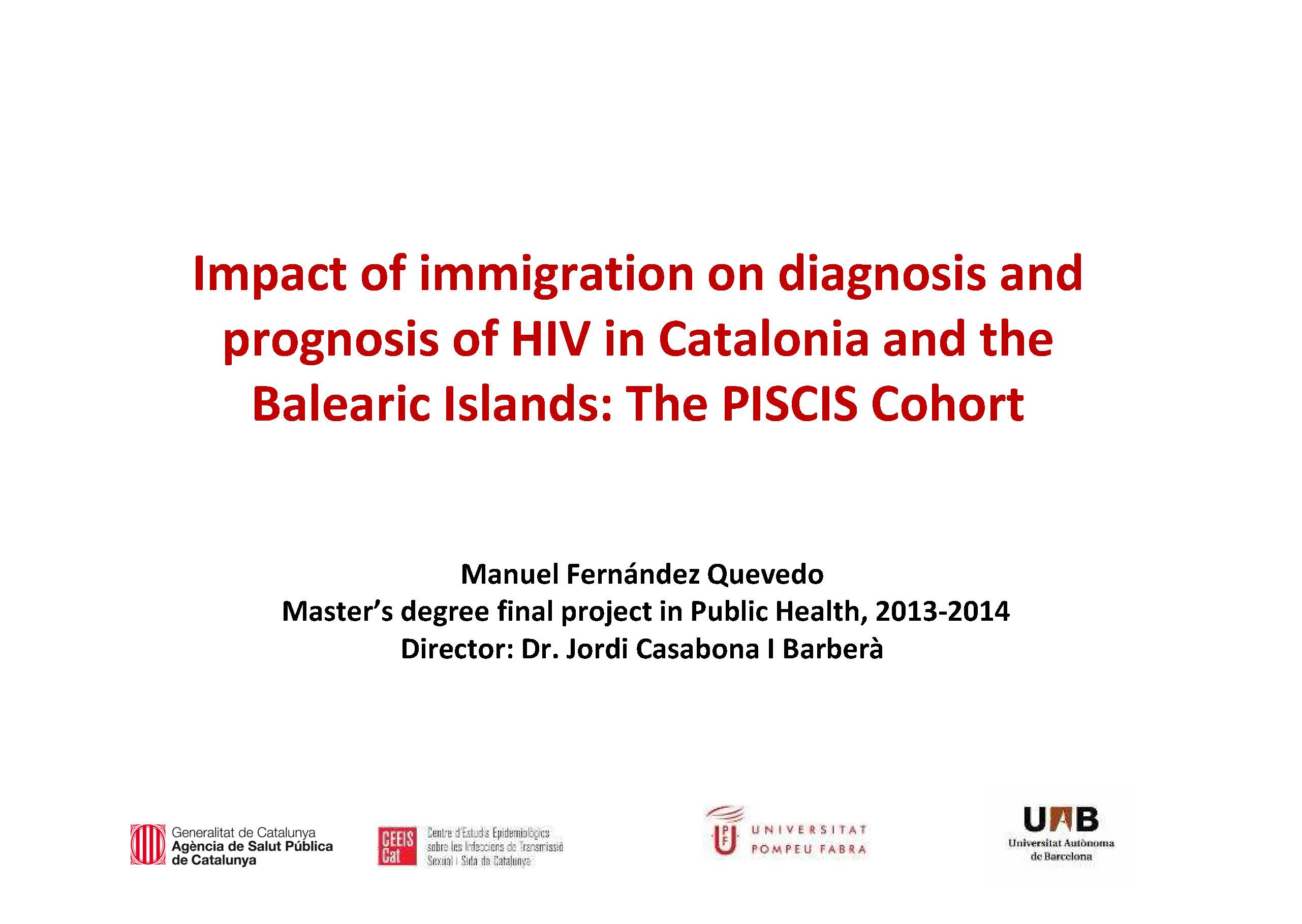Resumen
In Catalonia there has been an increase in the number of migrants diagnosed with HIV. Migration
is a risk factor for late presentation, what causes concern due to clinical and epidemiological consequences.
This study aims to describe trends in the distribution and characteristics of migrants
among new HIV diagnosis, identify differences in presentation stage and clinical outcomes between
migrants and non-migrants and determinate factors for late and advanced presentation in migrants.
All new HIV diagnosis enrolled into the PISCIS Cohort between 2004-2011 were included.
Socio-demographic, clinical, and epidemiological variables were analysed and compared by region
of origin. Logistic regression models were used to identify factors associated with late presentation
and Cox regression models were used for progression to AIDS/death. Migrants tended to be
younger(p< 0.001), have a lower percentage of males(p< 0.001) and poorer educational level(p<0.001). Heterosexual transmission was more prevalent in migrants(p< 0.001). Sero-prevalence of
HBV was higher and HCV lower in migrants but varied by region of origin. Although migrants had
a higher probability of late presentation(p< 0.001), the only differences in advanced HIV disease
were in Sub-Saharan Africans(p< 0.001). Factors associated with late presentation among migrants
included older age, IDU, heterosexual transmission and poor educational level. Migrants were less
likely to progress to AIDS/death(p=0.001). Factors associated with poorer prognosis were older age,
poor educational level, being from Sub-Saharan Africa and diagnosed more recently(2008-2011).
This is one of few studies on migration and new HIV diagnosis which considers factors associated
with both late presentation and prognosis. Although most results are similar to other studies, the
better outcomes reported for migrants in this study may be attributable to bias in the differential
loss to follow-up and under-ascertainment of deaths in migrants. This highlights the key importance
of access to data sources beyond those used in traditional surveillance systems.






